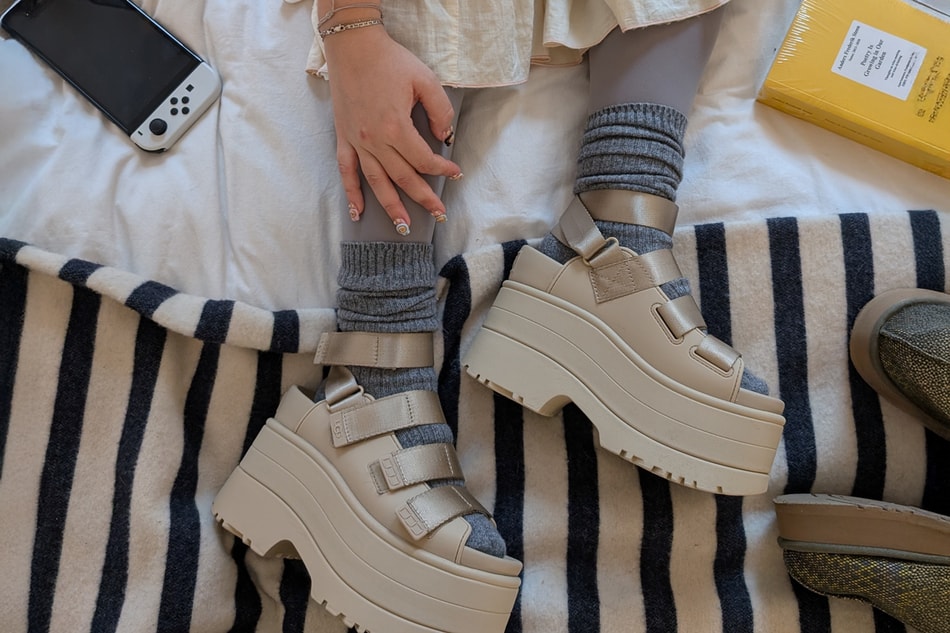Samuel Ross Provides More Insight Into His Latest Nike Collaboration
“18 months were spent working on the heel sculptures, tonal story, color palette, and reworking Japanese nylons.”
In anticipation of the general release of A-COLD-WALL*s latest Nike collaboration in the form of a Nike Zoom Vomero +5, Samuel Ross has given more insight into the design process via an interview with Document Journal. The British designer delves into the backstory on his second collaborative project with the sportswear brand which takes a departure away from the deconstructive approach seen on the original Air Force 1 collaboration. He goes on to explain how the sneakers provide a cohesive narrative to the brand’s 2019 spring/summer collection dubbed “HUMAN. FORM. STRUCTURE.” as well as the architectural influences that shape his working nature.
Read excerpts of the interview below and head over to Document Journal for the full story.
David Brake — You’ve worked with Nike before on an Air Force 1. For your latest capsule, you’ve chosen to rework the 2010 Nike Vomero +5. What made you gravitate towards this particular, rather obscure silhouette from the Nike archives?
Samuel Ross — Indeed—the A-COLD-WALL* Air Force 1 echoed the ideals of exposing, redefining, and reducing what I deem to be a perfect silhouette. My approach with the Vomero is about highlighting and humanizing intricacies of the shoe. The Vomero +5 is from an era of innovation living on the exterior of a trainer—the engine, spokes, hardware—all on constant display. This provides much opportunity to isolate multiple components of the ‘engine.’ You’ll find with the reworking of the Vomero a human take on the beginning and end point of the trainers: components will age and discolor. A focus on life cycle has been introduced through the removal of several PU and UV coatings frequently used to avoid discoloring and aging. I want the shoe to live, [and] that’s been achieved by removing the film between the product and the effects of our environment.
David — I know that in addition to the Nike Vomero shoe, the capsule will include a few other pieces including outerwear and trousers. How do these pieces fit into the capsule at large? Do they continue to play with the ideas that you’ve introduced through the shoe?
Samuel — The clothing focuses on exposure—more so the idea of interlocking components—that speak through negative and positive space. And the ability to transform—there is a relationship between the human approach that pioneers the Vomero. Nylon is a key focus throughout the clothing: a questioning of materiality vs fabrication has always been of interest to me—Japanese nylons the heat-sensitive properties blur that line further.
David — Looking back at your SS19 collection, HUMAN. FORM. STRUCTURE., I notice what seems to be a focus on sculpture. More specifically, the collection seems in part to be a study on how sculpture moves, something that is evident in your sculptural collaborative project with Jobe Burns for Concrete Objects. I also know that you have an interest in architecture, and that the capsule’s initial release will be in partnership with the Architectural Association School of Architecture. Based on your work in these two fields, how do these two practices, sculpture and architecture, which inherently are quite static, translate to your work with A-Cold-Wall*?
Samuel — Indeed, sculpturing isolates movement. It captures emotion and a scenario.
I find it fascinating—it is a field that I’ve had a relationship with for a while. Through toiling, my time developing commercial products, and as a contemporary illustration student—the tools have changed, although intent and relationship have bled into a more direct, tangible form. A-COLD-WALL* hones the premise of architecture above sculpture—both are present, though performative architecture is encouraged at every turn from our retail spaces, whilst [also] encouraging the consumer, the protagonist, to physically involve themselves with material—not simply product. Tangibility, in both fields, is incredibly important to relaying many of A-COLD-WALL*’s talking points—collaborating with the Architectural Association School of Architecture has been barrier removing. We’ve honed the idea of free thought. And the results are refined, considered, environmentally friendly—quite meditative actually.





